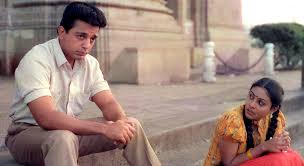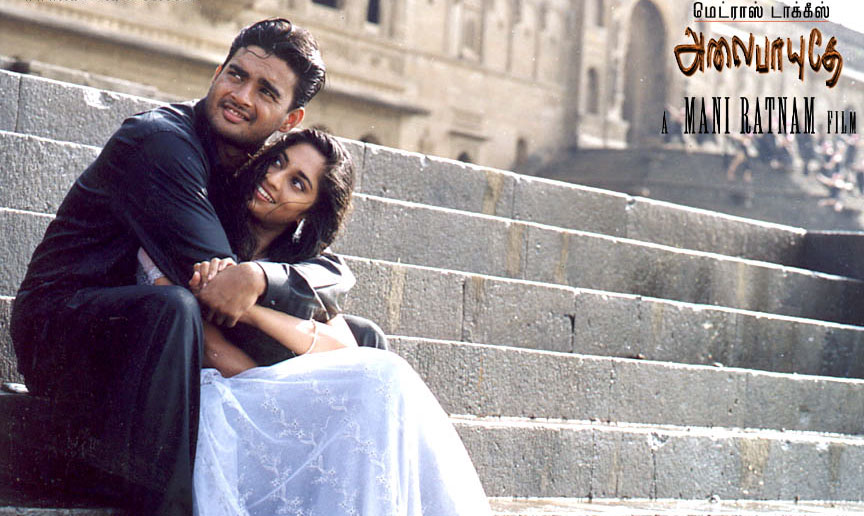Few filmmakers in Indian cinema have consistently redefined the language of storytelling quite like Mani Ratnam. His films are not just cinematic experiences; they are emotional journeys, brimming with raw realism, lyrical music, and socio-political resonance. From the gritty underworld of Nayakan to the romantic complexities of Alaipayuthey, Ratnam’s vision continues to evoke goosebumps even decades later.
Here’s a look at five classic Mani Ratnam movies that still hold power over our hearts:
1. Nayakan (1987)

Nayakan, inspired loosely by the life of Mumbai don Varadarajan Mudaliar, is a haunting tale of a man who becomes a messiah for the people, while descending into the darkness of crime. Kamal Haasan’s towering performance, P.C. Sreeram’s moody cinematography, and Ilaiyaraaja’s poignant score come together in a symphony of pain, power, and pathos.
The transformation of Velu Nayakan from a traumatized child to a feared yet beloved underworld don is executed with remarkable subtlety. A landmark in Indian cinema, Nayakan was India’s official entry to the Oscars and is often ranked among the greatest Indian films of all time.
2. Roja (1992)

In Roja, Ratnam shifted gears to explore patriotism and personal sacrifice against the backdrop of terrorism in Kashmir. The film tells the story of a simple Tamil woman, Roja, who journeys into unfamiliar territory to rescue her husband, a cryptologist kidnapped by militants. This emotionally charged narrative blends love with national identity in a way that was revolutionary at the time.
Roja also marked the explosive debut of music composer A.R. Rahman, whose evocative score added layers of depth to the film. The film was a catalyst in introducing mainstream Indian audiences to the conflict in Kashmir, wrapped in an intensely human story.
3. Bombay (1995)

Bombay is both a love story and a political statement. Set against the backdrop of the 1992-93 Bombay riots, it portrays an interfaith couple battling societal hatred and communal violence. Arvind Swami and Manisha Koirala’s performances capture the innocence and agony of lovers caught in the crossfire of religious intolerance.
Ratnam’s bold storytelling and Rahman’s unforgettable music, particularly “Kannalane” and “Hamma Hamma,” gave the film a visceral power that remains unmatched. The scenes of riot-torn streets, juxtaposed with the couple’s desire to keep their family together, leave an indelible impact.
4. Dil Se.. (1998)

A haunting tale of love and alienation, Dil Se.. delves into the psyche of a man who falls for a mysterious woman with a deadly mission. This film, part of Ratnam’s unofficial “terrorism trilogy,” starred Shah Rukh Khan and Manisha Koirala in one of their most intense performances.
Ratnam doesn’t offer easy answers; instead, he explores the grey spaces between love and obsession, duty and rebellion. The film’s iconic soundtrack—again by Rahman—produced “Chaiyya Chaiyya,” which became a global sensation. Its tragic climax continues to evoke emotional intensity and interpretive debate.
5. Alaipayuthey (2000)

With Alaipayuthey, Mani Ratnam gave Indian cinema one of its most beloved modern romances. Unlike traditional love stories, this film explores what happens after the fairy tale ends. It’s about marriage, misunderstandings, and maturing love. Madhavan and Shalini’s chemistry felt refreshingly real, supported by Santosh Sivan’s vibrant cinematography and Rahman’s soul-stirring music.
The film’s non-linear narrative, youthful energy, and realistic portrayal of urban relationships struck a deep chord with millennials. It remains a cultural touchstone for romantic cinema in South India.
Conclusion
Mani Ratnam’s classics are more than just films—they are time capsules of emotion, culture, and evolving social realities. Whether addressing urban love, inter-religious conflict, or national identity, his storytelling remains profoundly human and timeless. These movies don’t just entertain—they challenge, inspire, and stay with you long after the credits roll.
Written by: Pranjal Bapna

